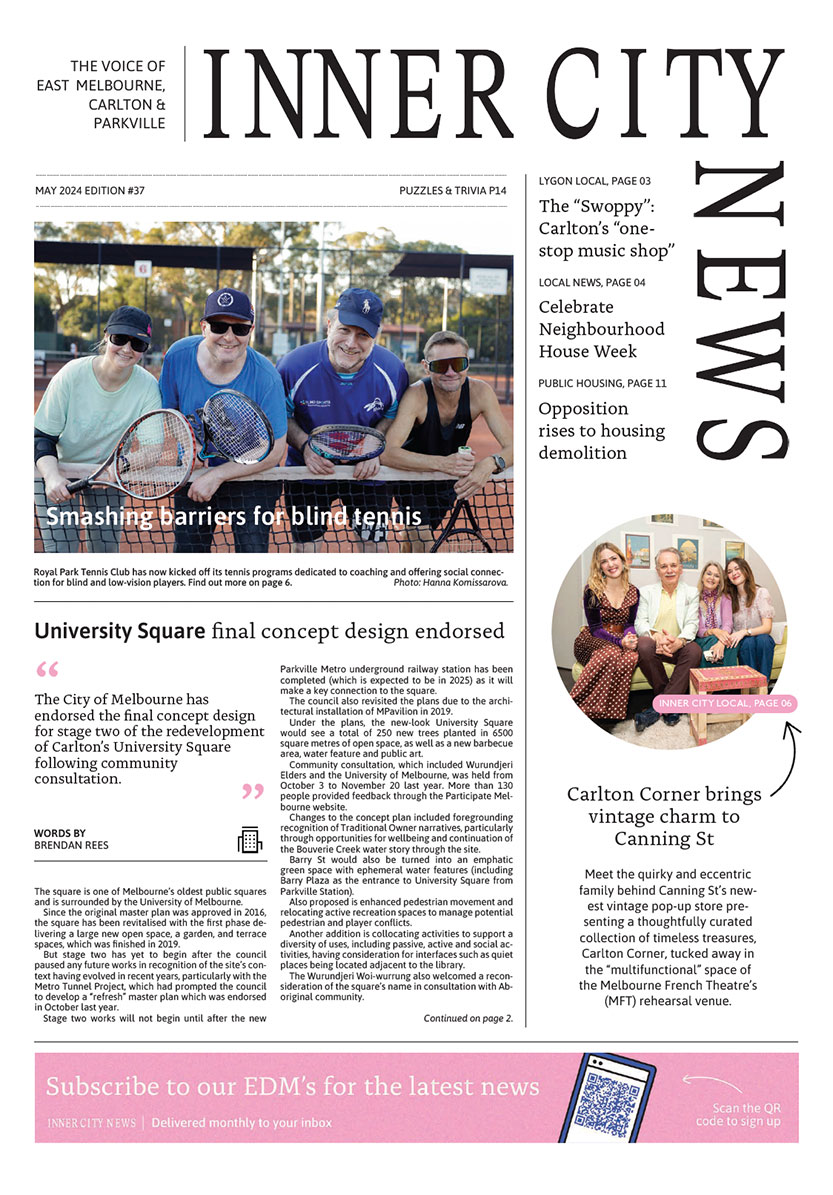The evolution of a suburb
When the metropolis of Marvellous Melbourne was being developed in the 1800s, it followed the Motherland’s hierarchical model of a central business district surrounded by concentric rings of affluent housing, services and servers.
The majestic tree-lined boulevards of prestigious mansions led to the city, spanning along St Kilda Rd and the stately homes of East Melbourne. Beyond this, the city fringes accommodated their vices and housed their servants.
When cable tramways were introduced in 1888 some of Melbourne’s most influential families moved into East Melbourne, but as the class structure gave rise to the growing middle class, that style of costly, high maintenance accommodation waned in popularity. In an attempt to cling to the homes of old, The Herald reported in 1914, in the column St Kilda Road Home, that “Mansions are not out of favour to the extent that some people imagine”.
Sadly, this was not the reality, with almost all of St Kilda Rd’s commissioned architectural homes, with large reception rooms and lavish gardens, having been demolished for office towers, and more recently high-rise apartments. The East Melbourne Group (EMG) actively engages in bureaucratic battles to resist our suburb encountering the same fate as St Kilda Rd and other leafy Melbourne residential zones.
A city, and residential suburb, must adapt and change with changing needs of its population, but the East Melbourne Group hopes it is the residents, and not the developers’ rate of return, which dictates the terms of this evolution.
We are very pleased to report a recent win against the proposed (partial) demolition of a property built in 1860. Last month, VCAT rejected the permit for a St Kilda Rd-style, multi-storey commercial office building being erected at 204 Albert St, East Melbourne.
The East Melbourne Group supported the ACVP (Albert, Clarendon, Victoria and Powlett streets) residents’ lobby to defeat the application. While opposition to the development was supported by City of Melbourne and the National Trust, the wealth and tenacity of developers saw the fight span more than three years in very costly legal battles. It was the fundraising efforts of residents and the contribution of the East Melbourne Group, which funded the costs of the barristers and expert witnesses to defeat the application. The campaign ran into the tens of thousands and is one of but many we are currently facing.
The VCAT hearing we are preparing for in September, is to limit the partial demolition and construction of an apartment tower over the heritage-listed Eblana, at 140-142 Jolimont Rd, East Melbourne. Eblana is an Italianate-style terrace residence, built in 1883 for Thomas Jackson, best known as the publican of the Young and Jackson’s hotel. We have established a “fighting fund” for EMG to be represented at the VCAT hearing for this and other current battles raging, including 10 Wellington Parade.
In the last edition of the 3002 East Melbourne and Jolimont Community Magazine, we discussed that “East Melbourne held a long tradition of apartment living, from converted mansions, to rooming houses, to Art Deco flats. Those which were built in a time before elevators and remained at a human scale.
Any loss of this traditional residential fabric for large scale modern apartment developments is a fatal blow to our architectural history and all which it represents.
For too long we have seen the continued erosion of our heritage buildings and community fabric and remind readers that “those who cannot remember the past are condemned to repeat it.” The streets of East Melbourne are a living history lesson, and a physical link to our past.
The EMG is our community’s voice in ensuring that we can preserve all that makes our suburb great. We need to uphold that the vandalism of the 1970s is not repeated. We need to be vigilant; we need to continue to lobby our political representatives and engage with them to let them know what we want.
Our efforts to represent our residents to preserve our architectural history and urban amenity, are carried out by passionate EMG volunteers and funded by EMG membership and fundraising efforts. COVID restrictions have prevented the flow of funds usually generated from the social activities, hence we are extremely grateful for the recent generosity of our community donors •

University Square final concept design endorsed





 Download the Latest Edition
Download the Latest Edition